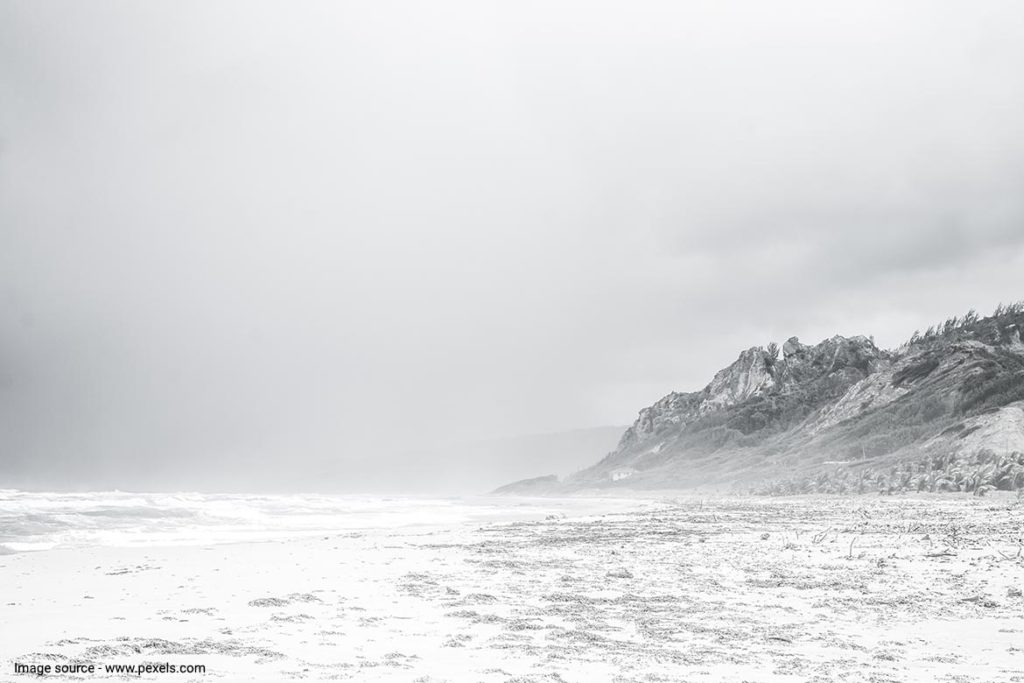Large parts of the United States and Canada are currently in the grip of a ‘bomb cyclone,’ which has killed dozens of people and left millions without power. Snow has blanketed large parts of the United States and Canada, causing flight and train cancellations and delays. As visibility has dropped to near-zero and roads have become dangerously icy, a number of fatal accidents have occurred.
Though the situation appears to have improved in some areas, it is not expected to improve significantly until Tuesday, and the storm’s effects are expected to last throughout the week. Here we are going to explain what the ‘bomb cyclone’ is, how it has disrupted daily life.
What is Bomb Cyclone?
A cyclone is a weather system in which winds rotate inwardly to an area of low atmospheric pressure.S put, a ‘bomb cylone’ is one that forms very quickly, the speed with which it forms is more important than its strength.
“Bomb cyclones form when air near the Earth’s surface rapidly rises in the atmosphere, causing a sudden drop in barometric pressure — at least 24 millibars within 24 hours,” according to NBC.
The bomb cylone is drawing Arctic air into the affected areas of the United States and Canada. These powerful storms bring heavy rain and strong winds. Right now, very cold Arctic air is being drawn into the United States, complicating matters further.
Are bomb cyclones same as hurricanes?

Read more: Revisiting 2022: Here are the 11 biggest international news of this year
These cyclones can also manifest as hurricanes. However, this is not always the case.
“All bomb cyclones are not hurricanes,” climate scientist Daniel Swain told NBC. However, they can sometimes take on characteristics that make them resemble hurricanes, with very strong winds, heavy precipitation, and well-defined eye-like features in the centre.”
How has the bomb cyclone affected the United States and Canada?
The storm dumped massive amounts of snow in the affected area, causing power outages, cancelling or delaying flights and trains, and causing traffic accidents.
According to NBC, at least 46 people have been killed in the United States so far. According to the Toronto Sun, at least four people were killed in a car accident in Canada.
According to NBC, people have died in the following states: Colorado, Illinois, Kansas, Kentucky, Michigan, Missouri, Nebraska, New York, Ohio, Oklahoma, Tennessee, and Wisconsin.
Accidents occur as a result of poor visibility and dangerous roads caused by snow, and people are stranded or indoors without heat because up to 1.5 million people have lost power.
Power outage
Read more: Weekly Update: Top 10 International News Of This Week
According to the BBC, the storm has affected 250 people in the United States and Canada, and 1.5 million have lost power.
Though the United States has experienced the majority of the disruption, Canada has also experienced outages and passenger issues.
“In Canada, Ontario and Quebec bore the brunt of the Arctic blast, with hundreds of thousands without power. “From British Columbia to Newfoundland, much of the rest of the country was under extreme cold and winter storm warnings,” according to the BBC.
New York Governor Kathy Hochul has stated that up to 15,000 people in some parts of the state are unlikely to have power restored by Tuesday.
Accidents due to poor visibility
According to the BBC, temperatures in Montana can reach -50*C, and near-whiteout conditions have been reported in Minnesota, Iowa, Wisconsin, and Michigan.
A white-out condition occurs when the snow that has fallen around you and the snow that is still falling from above blend together, making visibility difficult because you cannot distinguish the ground ahead of you from the sky or fields around you.
When the ground is covered in a white blanket of snow, new snow from a lake-effect storm or blizzard can cause the landscape to blend together. When you add whitish grey storm clouds to the mix, your sense of spatial boundaries can quickly become warped. This can obviously lead to extremely hazardous road conditions.
Accidents and people being stranded outside have been reported, with some even dying. According to the BBC, fifty cars collided in Ohio, killing four people. According to CNN, up to 500 people were stranded across New York after their vehicles became stuck in snow, and some residents were forced to stay indoors for up to 56 hours at a time.
Flight cancellations and travel delays
Thousands of flights have been cancelled or delayed in the United States and Canada recently, disrupting people’s plans to travel for the Christmas and New Year holidays.
According to the BBC, over 5,900 US flights were cancelled on Friday. Thousands more flights were cancelled or delayed this weekend, according to Fox Business.
“On Christmas Day, more than 2,300 flights were cancelled, and nearly 6,000 others were delayed,” it said. “On Saturday, nearly 3,500 flights were cancelled, and another 8,607 were delayed,” Fox reported, adding that the disruption is likely to continue this week.”Cancelations will continue into next week,” Fox reported.
